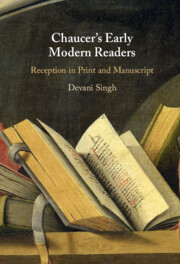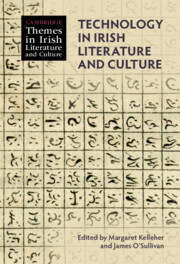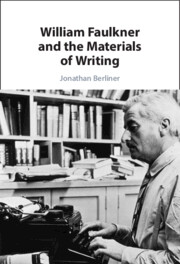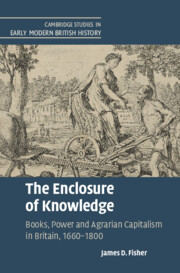61 results
Chapter 5 - Book Trade
- from Part II - Publishing History and Legacy
-
-
- Book:
- Jonathan Swift in Context
- Published online:
- 02 May 2024
- Print publication:
- 09 May 2024, pp 35-42
-
- Chapter
- Export citation
2 - The News Landscape
-
- Book:
- Real News about the News
- Published online:
- 09 February 2024
- Print publication:
- 01 February 2024, pp 17-36
-
- Chapter
- Export citation
Chapter 2 - ‘My Pen Is at the Bottom of a Page’
-
-
- Book:
- The Cambridge Companion to Byron
- Published online:
- 02 November 2023
- Print publication:
- 16 November 2023, pp 23-37
-
- Chapter
- Export citation
Chapter 1 - Comics Drawing
- from Part I - Forms
-
-
- Book:
- The Cambridge Companion to Comics
- Published online:
- 17 August 2023
- Print publication:
- 31 August 2023, pp 25-45
-
- Chapter
- Export citation
Chapter 9 - The American Revolution
- from Part III - Revolutions and Empires
-
-
- Book:
- The Nation in British Literature and Culture
- Published online:
- 20 July 2023
- Print publication:
- 10 August 2023, pp 157-173
-
- Chapter
- Export citation

Chaucer's Early Modern Readers
- Reception in Print and Manuscript
-
- Published online:
- 08 June 2023
- Print publication:
- 22 June 2023
-
- Book
-
- You have access
- Open access
- Export citation
Becoming the Muʿallim: how tradition and innovation made a Nahḍa icon
-
- Journal:
- Bulletin of the School of Oriental and African Studies / Volume 86 / Issue 2 / June 2023
- Published online by Cambridge University Press:
- 12 July 2023, pp. 241-259
- Print publication:
- June 2023
-
- Article
-
- You have access
- Open access
- HTML
- Export citation
Chapter 1 - From Boards to Books: The Circulation of Shakespearean Songs in Manuscript and Print during the Interregnum
-
-
- Book:
- Performing Restoration Shakespeare
- Published online:
- 28 January 2023
- Print publication:
- 26 January 2023, pp 15-37
-
- Chapter
- Export citation
Chapter 1 - Print as Technology: The Case of the Irish Language, 1571–1850
- from Part I - Genealogies
-
-
- Book:
- Technology in Irish Literature and Culture
- Published online:
- 19 January 2023
- Print publication:
- 26 January 2023, pp 11-28
-
- Chapter
- Export citation

Technology in Irish Literature and Culture
-
- Published online:
- 19 January 2023
- Print publication:
- 26 January 2023
1 - War, Information, and Popular Consent in Seventeenth-Century Venice
-
- Book:
- War, Communication, and the Politics of Culture in Early Modern Venice
- Published online:
- 15 January 2023
- Print publication:
- 05 January 2023, pp 27-67
-
- Chapter
- Export citation

William Faulkner and the Materials of Writing
-
- Published online:
- 24 May 2023
- Print publication:
- 05 January 2023
Chapter 26 - Molière and His Publishers
- from Part V - Reception and Dissemination
-
-
- Book:
- Molière in Context
- Published online:
- 10 November 2022
- Print publication:
- 24 November 2022, pp 246-255
-
- Chapter
- Export citation
Chapter 27 - Molière in Print
- from Part V - Reception and Dissemination
-
-
- Book:
- Molière in Context
- Published online:
- 10 November 2022
- Print publication:
- 24 November 2022, pp 256-264
-
- Chapter
- Export citation
Chapter 1 - Reframing Religious Difference
-
- Book:
- Friends, Neighbours, Sinners
- Published online:
- 21 July 2022
- Print publication:
- 04 August 2022, pp 30-68
-
- Chapter
- Export citation
Chapter 4 - Learning without Labour
-
- Book:
- The Enclosure of Knowledge
- Published online:
- 07 July 2022
- Print publication:
- 21 July 2022, pp 122-169
-
- Chapter
- Export citation
Chapter 5 - Becoming Institutional
-
-
- Book:
- Institutions of Literature, 1700–1900
- Published online:
- 30 June 2022
- Print publication:
- 21 July 2022, pp 101-119
-
- Chapter
- Export citation

The Enclosure of Knowledge
- Books, Power and Agrarian Capitalism in Britain, 1660–1800
-
- Published online:
- 07 July 2022
- Print publication:
- 21 July 2022
Chapter 4 - Translation
- from Part I - Origins
-
-
- Book:
- Globalization and Literary Studies
- Published online:
- 01 April 2022
- Print publication:
- 21 April 2022, pp 67-79
-
- Chapter
- Export citation
Chapter 9 - Early Black Futures
- from Part III - Early African American Life in Literature
-
-
- Book:
- African American Literature in Transition, 1750–1800
- Published online:
- 01 April 2022
- Print publication:
- 07 April 2022, pp 228-254
-
- Chapter
- Export citation



